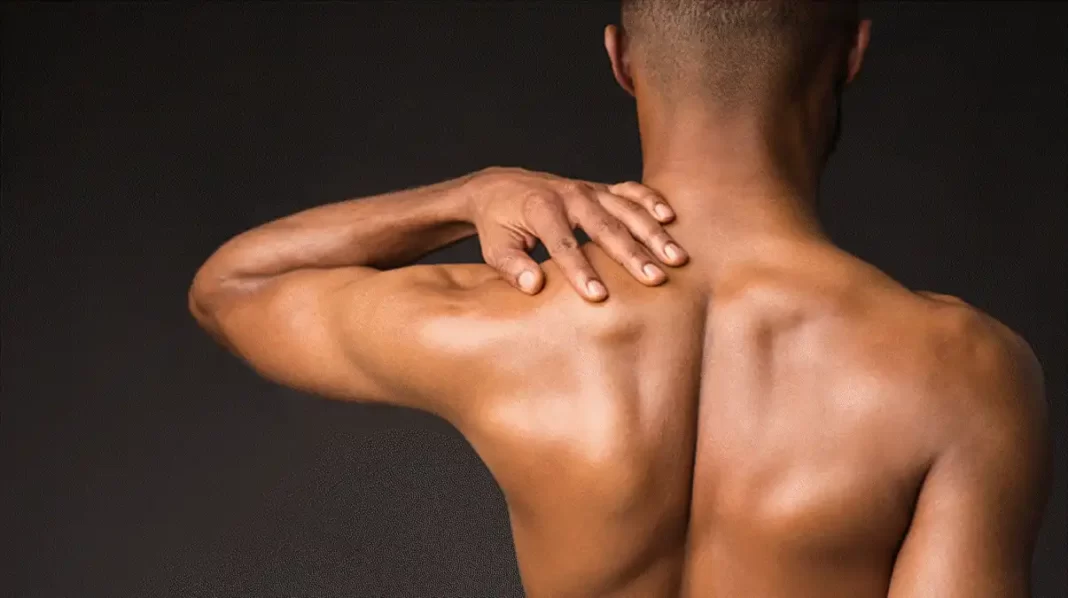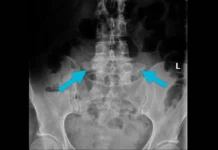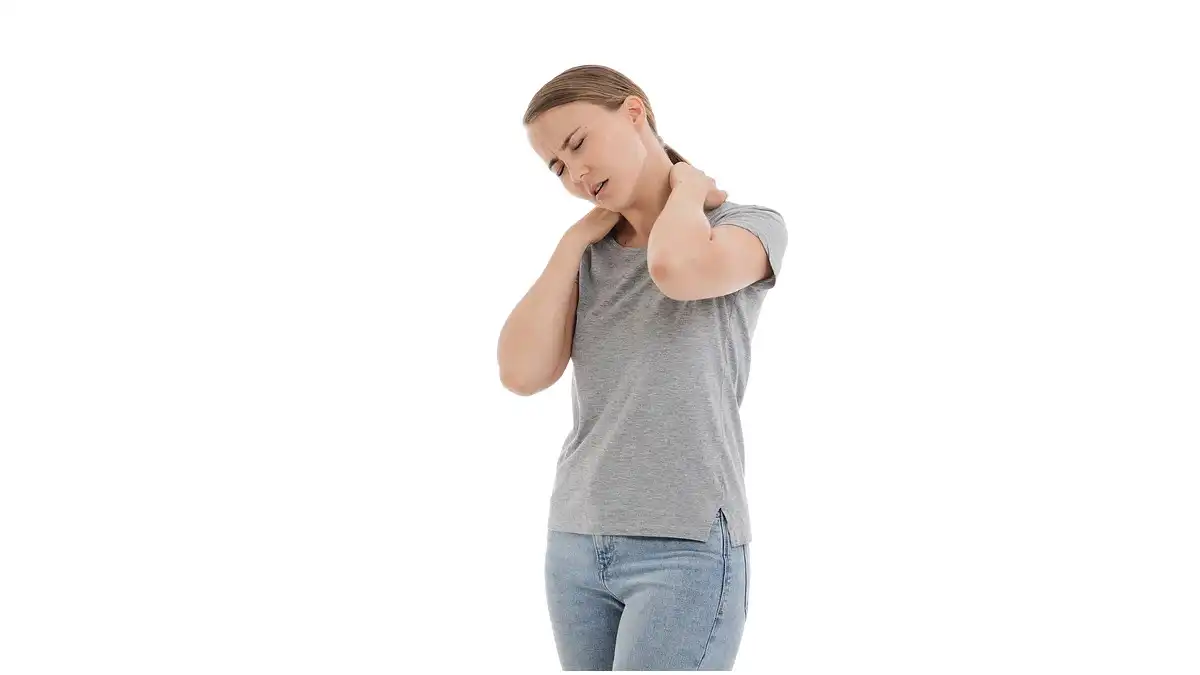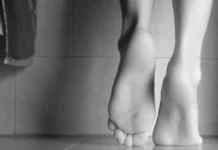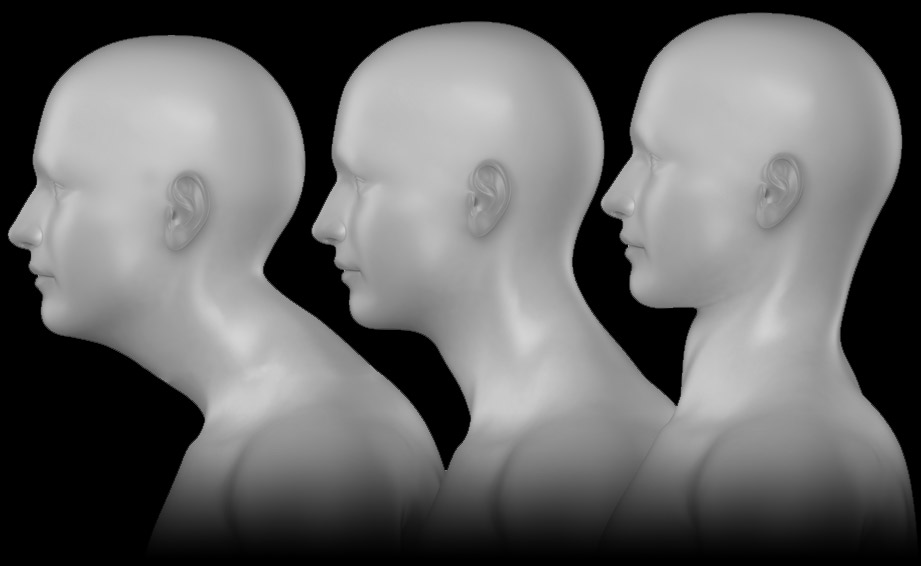Introduction
Thoracic Outlet Syndrome (TOS) is a complex condition characterized by compression of the neurovascular structures as they pass through the thoracic outlet, a narrow passageway between the base of the neck and the armpit. This compression can lead to a variety of symptoms, including pain, numbness, weakness, and tingling in the upper extremities, as well as vascular symptoms such as swelling, discoloration, and coldness of the affected arm.
One of the primary causes of TOS is the compression of the brachial plexus, a network of nerves that originate from the spinal cord in the neck and innervate the upper extremities. Compression of the brachial plexus can occur as a result of anatomical abnormalities such as cervical ribs, abnormal muscle bands, or hypertrophied scalene muscles. Additionally, trauma, repetitive stress injuries, and poor posture can contribute to the development or exacerbation of TOS symptoms.
Another common cause of TOS is compression of the subclavian artery or vein, which can occur due to abnormal bony structures, muscular abnormalities, or repetitive motions that place undue pressure on the vessels as they pass through the thoracic outlet. This compression can lead to vascular symptoms such as swelling, discoloration, and coldness of the affected arm, as well as potentially serious complications such as blood clots or arterial aneurysms.
The symptoms of TOS can vary depending on the structures that are compressed and the severity of the compression. Patients with neurogenic TOS may experience pain, numbness, tingling, and weakness in the neck, shoulder, arm, and hand, often exacerbated by certain positions or activities such as overhead reaching or prolonged sitting. Vascular TOS, on the other hand, may present with symptoms such as arm swelling, discoloration, coldness, or a weak or absent pulse in the affected arm.
Diagnosing TOS can be challenging due to the diverse range of symptoms and potential underlying causes. A thorough history and physical examination are essential for evaluating patients with suspected TOS and ruling out other possible causes of their symptoms. Imaging studies such as X-rays, MRI, or CT scans may be ordered to assess for anatomical abnormalities or evidence of nerve or vascular compression.
Treatment for TOS typically involves a multidisciplinary approach aimed at relieving symptoms, improving function, and addressing underlying contributing factors. Conservative measures such as physical therapy, posture training, and ergonomic modifications are often recommended as first-line treatments. In some cases, medications such as pain relievers or muscle relaxants may be prescribed to alleviate symptoms. In refractory cases or when vascular compromise is present, surgical intervention may be necessary to decompress the affected structures and alleviate symptoms. Overall, early recognition and intervention are essential for optimizing outcomes and improving quality of life for patients with TOS.
Anatomy
The brachial pluxus consists of nerve roots C5 to C8 and D1 and provides innervation to the entire upper limb. It travels with the subclavian artery between the anterior and medial scalenes (the intrascalene space). The subclavian vein becomes part of the neurovascular bundle as it passes under the clavicle (the costoclavicular space) and travels under the insertion of the pectoralis minor (the subpectoral space) before continuing the along the arm.
What are the types of compression?
- Neurogenic
- Venous
- Arterial
Approximately 95% of cases of thoracic outlet syndrome are neurogenic. Others are rare, but more serious when it affects a vein or artery.

Causes
- Anatomical Anomalies:
- People who are born with anatomical abnormalities, such as an extra rib (cervical rib), abnormal muscle, or supernumerary ligament, may be predisposed to thoracic outlet syndrome.
- Trauma:
- Trauma, such as injuries or fractures to the neck or clavicle, can lead to anatomical changes that promote compression of nerve and vascular structures in the thoracic outlet.
- Muscle Hypertrophy:
- Hypertrophy of the scalene muscles, located in the neck, can lead to compression of nerves and blood vessels across the thoracic outlet.
- Repetitive Activities:
- Certain work or sporting activities that require repetitive movements of the arm and neck may contribute to the development of thoracic outlet syndrome.
- Inappropriate Rib Positioning:
- Inappropriate positioning of the ribs, often linked to postural disorders, can contribute to compression of structures at the thoracic outlet.
- Normal Anatomical Variations:
- Some people may have normal anatomic variations, such as a narrow thoracic outlet, that increase the risk of compression of neurovascular structures.
- Pregnancy :
- In some pregnant women, enlargement of blood vessels and compression from the growing uterus may contribute to thoracic outlet syndrome.
- Genetic Predisposition:
- Some individuals may have a genetic predisposition to develop anatomical abnormalities favoring thoracic outlet syndrome.
Symptoms
Thoracic outlet syndrome can present with a variety of symptoms that result from compression of neurovascular structures at the thoracic outlet. Symptoms can vary from person to person, and their intensity often depends on the severity of the compression. Here are some symptoms commonly associated with thoracic outlet syndrome:
- Pain and Discomfort:
- Pain in the neck, shoulder and arm, often on the side affected by the syndrome. The pain may be described as a burning, tingling, or electric shock sensation.
- Numbness and Tingling:
- Numbness or tingling in the arm, forearm, hand or fingers. It can be intermittent or constant.
- Muscular weakness :
- Muscle weakness in the arm, which may affect the ability to perform simple tasks or lift objects.
- Cold sensations:
- Feeling of cold in the hand and fingers, often associated with reduced blood circulation due to vascular compression.
- Skin Color Changes:
- Changes in skin color, such as cyanosis (blue discoloration) or paleness, due to impaired blood circulation.
- Swelling :
- Swelling of the hand and fingers, resulting from stagnation of blood and lymph.
- Headache :
- Headaches, which may be associated with muscle tension and changes in blood circulation.
- Pressure Sensitivity:
- Increased sensitivity to pressure in the neck and shoulder area.
- Loss of Coordination:
- Loss of coordination or difficulty making precise movements with the hand and fingers.
It is important to note that some symptoms of thoracic outlet syndrome may be exacerbated by specific activities, such as raising the arm or rotating the neck. Symptoms may also be intermittent, occurring during particular activities or specific body positions.
Osteopathic Treatment of Chest Distinction Syndrome
Osteopathic treatment of thoracic outlet syndrome aims to relieve pain, improve blood circulation and treat restrictions in the thoracic region. Osteopaths use a variety of gentle and specific manual techniques to restore balance and mobility to the affected area. Here are some commonly used approaches:
- Myofascial Release:
- Myofascial release techniques aim to release tension and adhesions in the muscles and fascia surrounding the thoracic outlet. This may help reduce compression of neurovascular structures.
- Stretching and Mobilization:
- Stretching and mobilization exercises may be prescribed to improve flexibility and mobility in the thoracic region. This helps reduce muscle tension and promote better posture.
- Release Techniques:
- Release techniques can be used to release muscle tension and trigger points in the scalene muscles and other muscles in the neck and shoulder area.
- Correction Posturale :
- The osteopath may recommend postural adjustments to avoid positions that exacerbate the symptoms of thoracic outlet syndrome. This may involve advice on sitting posture, standing posture and ergonomic adjustments.
- Functional rehabilitation :
- Functional rehabilitation exercises aim to strengthen the stabilizing muscles of the thoracic region, improve muscle coordination, and restore normal function of the arm and hand.
- Education and Advice:
- The osteopath provides educational advice on stress management, ergonomics, and self-management techniques to help the patient minimize the triggers of thoracic outlet syndrome.
Exercises and Rehabilitation for the Thoracic Parade
- Scalene Stretches:
- Position: Sitting or standing.
- Exercise: Gently tilt your head to one side while sliding your hand on the same side down your leg. Hold for 15-30 seconds. Repeat on the other side.
- Pectoral Stretches:
- Position: Standing in a corner of the room.
- Exercise: Place your forearms against the wall at a 90-degree angle to your arms. Take a step forward to stretch your chest. Hold for 15-30 seconds.
- Thoracic Mobilization:
- Position: Kneeling or sitting on a chair.
- Exercise: Place your hands behind your head, elbow open. Gently rotate your chest to one side. Return to center and repeat on the other side.
- Strengthening the Rhomboids:
- Position: Lying on your stomach on the ground.
- Exercise: Raise your torso and arms off the floor by squeezing your shoulder blades together. Hold for a few seconds and go back down. Repeat.
- Strengthening the Trapezoids:
- Position: Sitting or standing.
- Exercise: Raise your shoulders towards your ears, then bring them back as if you want to bring your shoulder blades together. Hold for a few seconds and release.
- Diaphragmatic Breathing Exercises:
- Position: Lying on your back.
- Exercise: Place one hand on your chest and the other on your abdomen. Breathe deeply through your nose, making sure that the hand on your abdomen rises more than the hand on your chest. Exhale slowly through your mouth.
- Strengthening the Abdominal Muscles:
- Position: Lying on your back.
- Exercise: Perform moderate abdominal exercises, such as leg raises or crunches, making sure to maintain a light abdominal contraction to stabilize the thoracic area.
- Postural Balancing Exercises:
- Position : Debout.
- Exercise: Practice single-leg balancing exercises, such as tree yoga, to improve stability and coordination.
Tips for Preventing Chest Distinction Syndrome
- Maintain Good Posture:
- Maintain an upright posture at all times. Make sure your shoulders are aligned with your hips, and your spine forms a straight line.
- Avoid Prolonged Positions:
- Avoid staying in the same position for long periods of time. If you work at a computer, take regular breaks to stretch and change positions.
- Ergonomics at Work:
- Adjust your workspace to promote healthy posture. The desk, chair and computer monitor should be at appropriate heights to avoid unnecessary strain.
- Perform Stretching Exercises:
- Incorporate stretching exercises into your daily routine to keep muscles and joints flexible. Focus particularly on the muscles of the neck, shoulders and thoracic region.
- Muscle Strengthening:
- Strengthen the stabilizing muscles of the thoracic region, such as the rhomboids and trapezius, to support healthy posture.
- Stress Management Techniques:
- Adopt stress management techniques, such as meditation, deep breathing, yoga, or progressive relaxation, to reduce tension in the neck and shoulder area.
- Avoid Repetitive Movements:
- Limit repetitive arm and neck movements that could contribute to compression of structures at the thoracic outlet.
- Maintain a Healthy Weight:
- Maintain a healthy body weight to reduce pressure on the spine and surrounding structures.
- Hydratation Adequate :
- Make sure you stay well hydrated. Adequate hydration promotes healthy intervertebral discs.
- Avoid Heavy Bags:
Osteopathic Case Studies and Successes
- Pain Relief Case:
- A patient presents with severe neck, shoulder, and arm pain associated with muscle weakness. After an osteopathic evaluation, the osteopath identifies joint and muscular restrictions at the thoracic outlet. By using myofascial release techniques and gentle joint manipulations, the osteopath manages to relieve tension, thereby improving mobility and reducing the patient’s pain.
- Mobility Improvement Case:
- An individual presents with significant stiffness in the neck and shoulders, accompanied by frequent numbness in the arm. The osteopath carries out a thorough assessment of posture and movement, identifying restrictions in the thoracic region. Through gentle manipulations and personalized stretching exercises, the patient gradually regains better mobility, thereby reducing stiffness and associated symptoms.
- Stress Management Case:
- A patient presents with symptoms of thoracic outlet syndrome exacerbated by daily stress. The osteopath incorporates relaxation techniques and stress management advice into the treatment plan. By teaching the patient deep breathing methods and relaxation exercises, the osteopath helps reduce muscle tension associated with stress, thus improving thoracic outlet symptoms.
- Postural Rehabilitation Cases:
- An individual has notable postural imbalances, contributing to the development of thoracic outlet syndrome. The osteopath works on postural reeducation by integrating specific exercises aimed at strengthening the stabilizing muscles of the thoracic region and promoting optimal posture. The patient also learns self-management techniques to maintain healthy posture on a daily basis.
- Cases of Improvement in Quality of Life:
- A patient suffers from persistent pain and functional limitations due to thoracic outlet syndrome. Thanks to a personalized osteopathic treatment plan, including gentle manipulations, rehabilitation exercises and prevention advice, the patient sees a significant improvement in their quality of life. Symptom management allows the patient to return to daily activities without excessive limitation.
Frequently asked questions
Q1: What is thoracic outlet syndrome (TDS)?
A: TDS is a condition where the nerves or blood vessels at the thoracic outlet are compressed. This can cause symptoms such as pain, numbness and weakness in the neck, shoulders and arms.
Q2: What are the symptoms of TDS?
A: Common symptoms include neck and shoulder pain, numbness or tingling in the arms, muscle weakness, and sometimes changes in skin color in the affected area.
Q3: How can osteopathy help in the treatment of TDS?
A: Osteopathy aims to improve mobility, release muscular tension and restore structural balance. Osteopaths use gentle manual techniques to relieve compression of nerves and blood vessels.
Q4: Are there any exercises I can do at home to relieve the symptoms of TDS?
A: Yes, gentle stretching and muscle strengthening exercises may be recommended. However, it is crucial to consult a healthcare professional before undertaking any exercise program.
Q5: How long does it typically take to feel improvements with osteopathic treatments for TDS?
A: The answer varies from person to person, but some patients experience relief after a few sessions. The frequency of treatments depends on the severity of the condition.
Q6: How can I prevent the development of TDS?
A: Maintaining good posture, avoiding prolonged positions, practicing muscle strengthening exercises, and managing stress can help prevent TDS.
Q7: When should I see an osteopath for SDT?
A: If you are experiencing symptoms such as persistent pain, numbness or weakness in the neck, shoulders or arms, it is recommended that you see an osteopath for an evaluation.
Q8: Are there any possible complications related to SDT?
A: In some cases, untreated TDS can lead to complications such as muscle atrophy, deep vein thrombosis, or neurological disorders. It is essential to treat the condition appropriately.
Q9: Is osteopathy suitable for everyone with TDS?
A: Each case is unique. Before beginning any treatment, it is recommended to consult a healthcare professional to determine the best approach, taking into account the patient’s overall medical condition.
Q10: Are osteopathic treatments for SDT painful?
A: Osteopathic techniques are generally gentle. The osteopath works in collaboration with the patient to ensure that the treatment is comfortable and adapted to their tolerance.
Adson maneuver

One of the most common TOS tests
- The examiner locates the pulse.
- He turns his head towards the affected shoulder/test side.
- Then, he asks the patient to bring the head into extension while the therapist externally rotates and extends the patient’s arm.
- The patient is asked to breathe deeply and maintain breathing.
Positive test: Disappearance of pulse.
General rebound procedure
The goal is to find a tissue barrier (by a gentle direct test). Once the direction of greatest resistance is found, this becomes the direction of application of the recoil technique:
- This technique uses breathing and the elastic rebound of tissues.
- To implement the elastic recoil component, move the fabric within the identified barrier (greatest resistance) to the limit of the fabric’s “softness”.
- Maintain this contact with the barrier while the patient breathes in and out.
- At the appropriate time, release the tissue barrier and the tissue will move back in the direction opposite to the resistance.
Thoraco-brachial outlet rebound procedure

- Both hands will create the tissue barrier by moving in opposite directions.
- When the tissues are released, it is important to ensure that the patient’s head or face will not be accidentally struck.
- The occipital hand should not exert pressure on the ear or mandible, nor on the side of the throat.
- It should engage the occiput and use it to pull the cervical spine longitudinally.
- A slight rotation of the head may be necessary, but too much rotation is contraindicated.
- Place a small pillow on the opposite side of the patient’s head to limit this if necessary.
- The contact of the other hand will indirectly engage the suspensory ligament of the pleural dome by engaging the first rib, which will put tension on the pleural dome then the suspensory ligament.
- By avoiding contact with the clavicle, we direct the technique towards the thoracic inlet rather than towards the shoulder girdle.
References
- Park JY, Oh KS, Yoo HY, Lee JG. Case report: Thoracic outlet syndrome in an elite archer in full-draw position. Clin Orthop Relat Res. 2013 Sep;471(9):3056-60. [PMC free article] [PubMed]
- Levine NA, Rigby BR. Thoracic Outlet Syndrome: Biomechanical and Exercise Considerations. Healthcare (Basel). 2018 Jun 19;6(2) [PMC free article] [PubMed]
- Jones MR, Prabhakar A, Viswanath O, Urits I, Green JB, Kendrick JB, Brunk AJ, Eng MR, Orhurhu V, Cornett EM, Kaye AD. Thoracic Outlet Syndrome: A Comprehensive Review of Pathophysiology, Diagnosis, and Treatment. Pain Ther. 2019 Jun;8(1):5-18. [PMC free article] [PubMed]
- Hussain MA, Aljabri B, Al-Omran M. Vascular Thoracic Outlet Syndrome. Semin Thorac Cardiovasc Surg. 2016 Spring;28(1):151-7. [PubMed]
- Stewman C, Vitanzo PC, Harwood MI. Neurologic thoracic outlet syndrome: summarizing a complex history and evolution. Curr Sports Med Rep. 2014 Mar-Apr;13(2):100-6. [PubMed]
- Grunebach H, Arnold MW, Lum YW. Thoracic outlet syndrome. Vasc Med. 2015 Oct;20(5):493-5. [PubMed]
- Povlsen S, Povlsen B. Diagnosing Thoracic Outlet Syndrome: Current Approaches and Future Directions. Diagnostics (Basel). 2018 Mar 20;8(1) [PMC free article] [PubMed]
- Kuhn JE, Lebus V GF, Bible JE. Thoracic outlet syndrome. J Am Acad Orthop Surg. 2015 Apr;23(4):222-32. [PubMed]
- Raptis CA, Sridhar S, Thompson RW, Fowler KJ, Bhalla S. Imaging of the Patient with Thoracic Outlet Syndrome. Radiographics. 2016 Jul-Aug;36(4):984-1000. [PubMed]
- Freischlag J, Orion K. Understanding thoracic outlet syndrome. Scientifica (Cairo). 2014;2014:248163. [PMC free article] [PubMed]
- Yunce M, Sharma A, Braunstein E, Streiff MB, Lum YW. A case report on 2 unique presentations of upper extremity deep vein thrombosis. Medicine (Baltimore). 2018 Mar;97(11):e9944. [PMC free article] [PubMed]
- Peek J, Vos CG, Ünlü Ç, van de Pavoordt HDWM, van den Akker PJ, de Vries JPM. Outcome of Surgical Treatment for ThoracicOutletSyndrome: Systematic Review and Meta-Analysis. Ann Vasc Surg. 2017 Apr;40:303-326. [PubMed]

